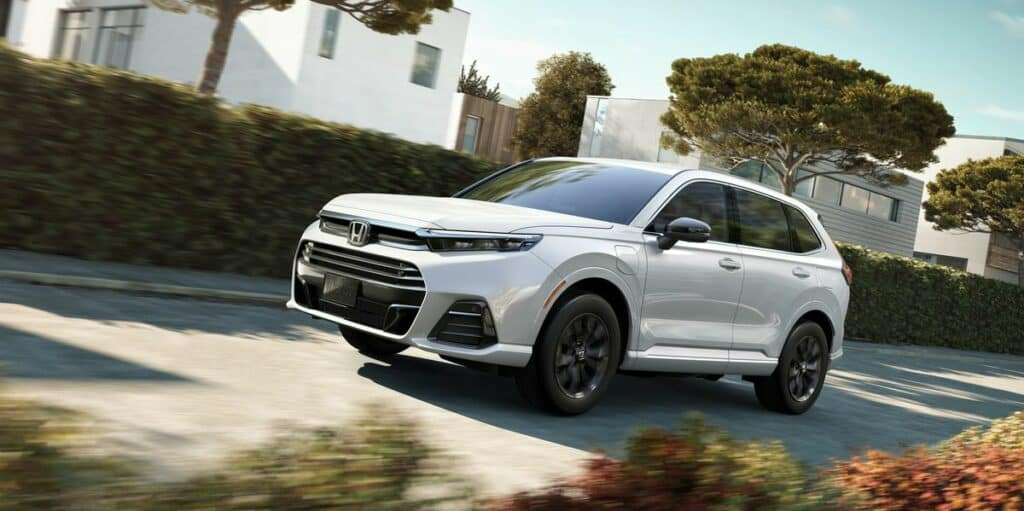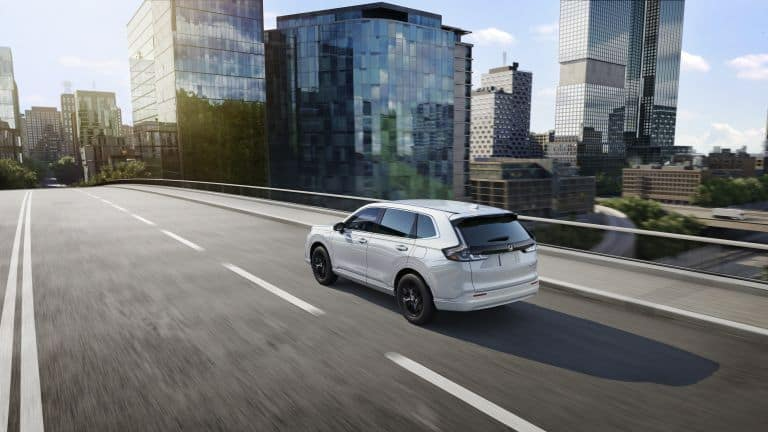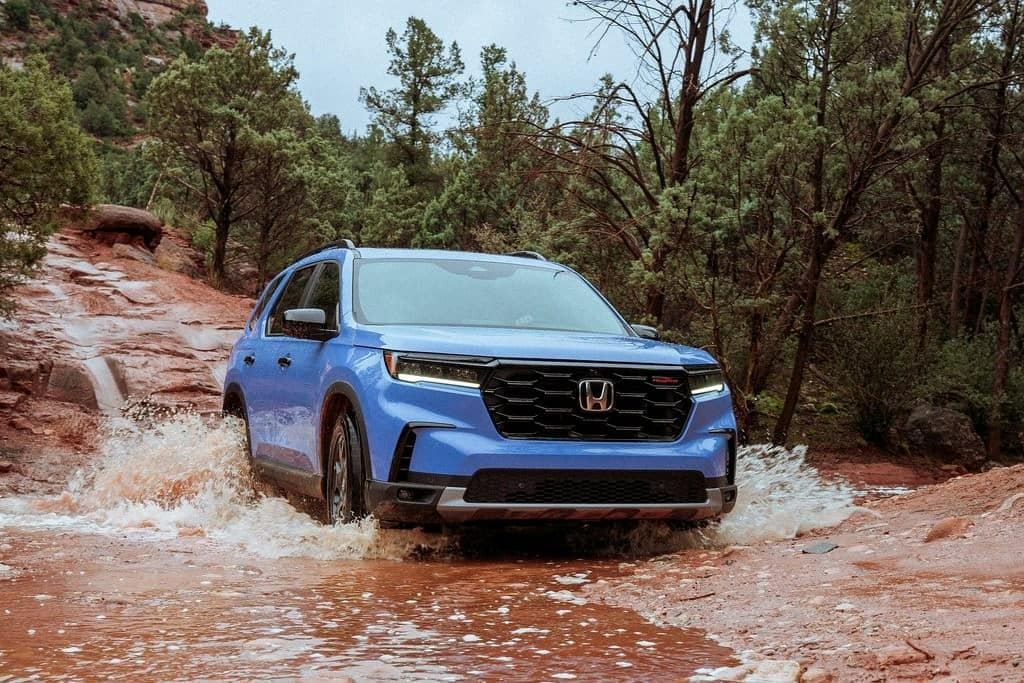The chicken or the egg?
At first glance, it is uncertain whether it’s the onboard battery or the hydrogen fuel tank that’s the reason for the range extension of the Honda CR-V eFCEV, new for 2025 and a head scratcher right out of the gate! Regardless, this vehicle represents an improvement over ongoing issues linked to battery electric vehicles when it comes to such factors as range, weight and charging infrastructure. The future is indeed bright when it comes to the FCEV or fuel cell electric vehicle, allowing for all-electric driving minus the strain of charging. See what this first look has in store!
Here’s more…
What we know!
The FCEV works by allowing the driver to simply refill their vehicle’s onboard hydrogen tank at a fill-up station, similar to pumping gas into a traditional car. But in this case, an electrochemical process onboard takes place, converting the hydrogen to electricity for powering the drive motor(s). While this sounds fairly simple – and it is – the availability of hydrogen fill stations is not so simple. However, Honda promises a solution for getting these FCEVs out into the market that will work without quick access to hydrogen – the eFCEV, and is building this fantastic technology into the 2025 CR-V eFCEV SUV.
In essence, the eFCEV is a plug-in hybrid, or perhaps something closer to a range-extender EV. While it’s tough to determine what power source is the primary one and which is running support, in a regular range-extender EV, the onboard battery and electric drive motor(s) are replenished by a gas-fed generator. In this case, hydrogen fills that role. But in the instance that the hydrogen runs low, and you’re nowhere near a filling station, fear not! Find an EV charger instead, plug in and continue your journey.
The options to charge the CR-V’s 17.7-kWh battery via a Level 2 charger is at home or on the go at a nearby station. Whichever option you choose, though, the result is the same – electricity is sent to power the drive motor.
In terms of range, the CR-V eFCEV gets up to 29 miles, which is about average when considering gas-electric plug-in hybrids but low for a range-extender EV, which, with a fuel tank of hydrogen fuel, gets to 270 miles.
Honda does not hold the “first” though with this technology that allows for charging batteries separately. Instead it was the Nikola Badger that was first, although the truck did not make it to production.
The CR-V eFCEV has clear benefits when it comes to the ability to travel at least some distance on onboard electricity alone without being held back by California’s hydrogen infrastructure. It
allows for FCEVs to enter the market and be usable, but usable is about the extent of it, with the 29 miles not that much of a distance beyond the reach of hydrogen fuel stations. But it is ample enough for a daily trip to the grocery store or gas station, for example.
Its overall look!
It’s a given that the CR-V is one of the most sought-after Hondas on the market, but for the eFCEV version, it falls short in some ways. For example, cargo room is reduced compared to the hybrid and gas CR-V models and the car also suffers another disappointment, namely when it comes time to charge up using a Level 2 AC charger. Honda has not given the eFCEV DC fast-charging capability, so drivers will inevitably be stuck in the AC slow lane when it comes to charging. This severely limits the convenience of quick, on-the–go charging.
The eFCEV version is presented with a different grill than the CR-V, as well as different wheels and clear upright rear lights. Sustainable materials are within. The hydrogen tanks are located behind the seats, which reduces cargo capacity. Seats fold flat, allowing ample room for a couple of bikes, and the lower compartment is still usable with the seats folded.
In other not-so-positive news, Shell, one of the leading suppliers of hydrogen filling stations, closed its refilling station in California, shrinking what was already a measly network of stations.
The tides may turn moving forward, or at least we can hope! But it surely presents a clear question and concern when it comes to the fact that this is an EV with virtually useless plug-in range that can be extended only by way of an alternative, and that alternative fuel is downright rare!
A look ahead!
Moving forward, Honda plans to build around 300 examples per year, with demand dictating that amount. These Honda CR-V eFCEVs are available only as leases and only in the state of California. It is in essence a concept vehicle that is poised to be leased.
It is also geared toward a very specialized market – drivers in California who are in the area of hydrogen pumps.
This new version of the latest generation Honda CR-V, the eFCEV stands for an “electric” Fuel Cell EV with a hydrogen component. With a much larger battery that can be charged from a plug and with a range of 20-30 miles, this “concept” is a combination of sorts of a hydrogen vehicle and a battery electric vehicle.
Hydrogen may be the answer to a long-standing issue, or it may not be. Honda is indeed hedging its bets! But it is also raising awareness of hydrogen as a relatively safe fuel source with clear environmental benefits. Most people may not even tell the difference in the eFCEV, with the hydrogen version resulting in little vibration from the power stack and an acceleration
that is similar to a regular car. The vehicle boasts a Sport mode, which increases throttle response and pushes synthesized engine sound through the speakers.
The eFCEV “feels” like a CR-V, which is good news for the fans of the model. It will function just like the real thing and is comfortable and easy to drive.
With a trusted and ever-popular vehicle like the CR-V, this new technology is well worth exploring. While it is still uncertain if hydrogen provides a glimpse into the future, this new approach is worth exploring. See what this first look has in store!



